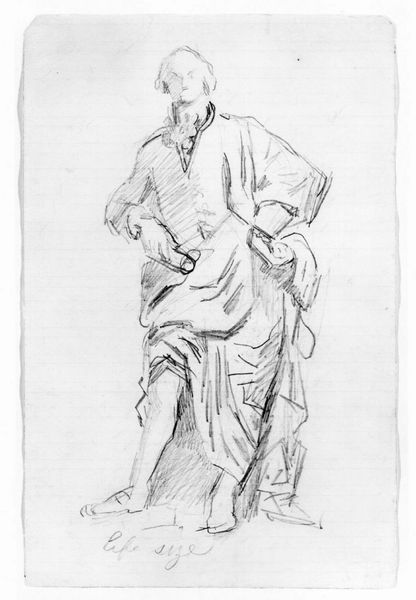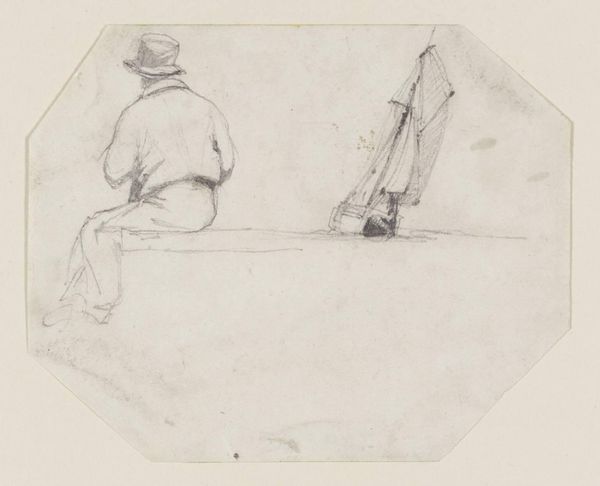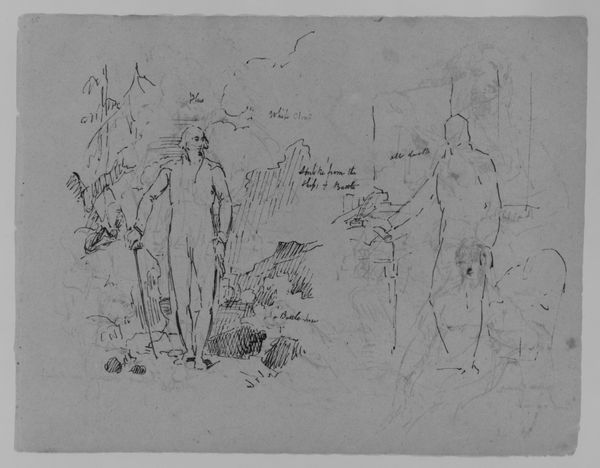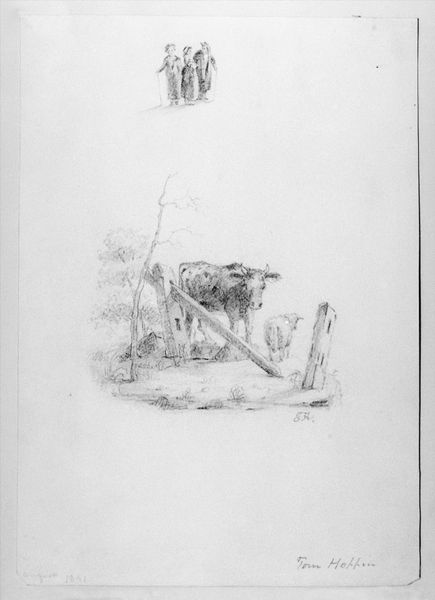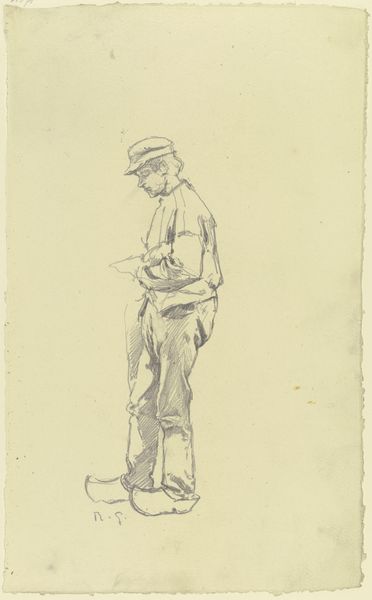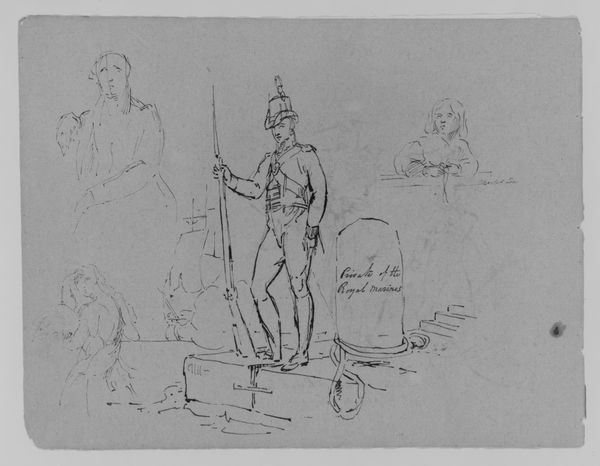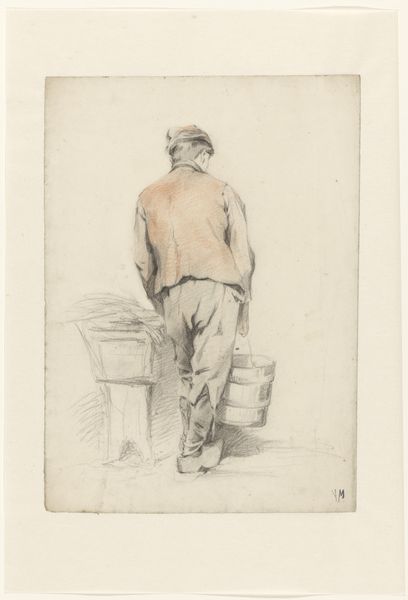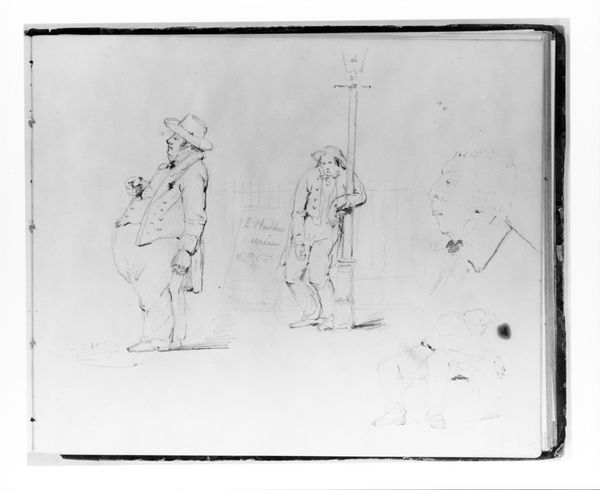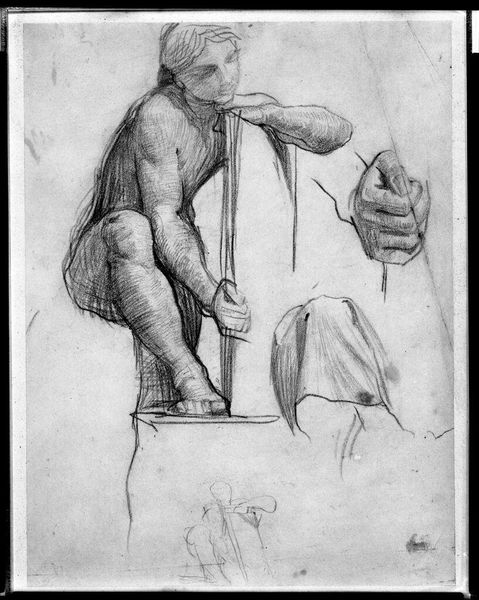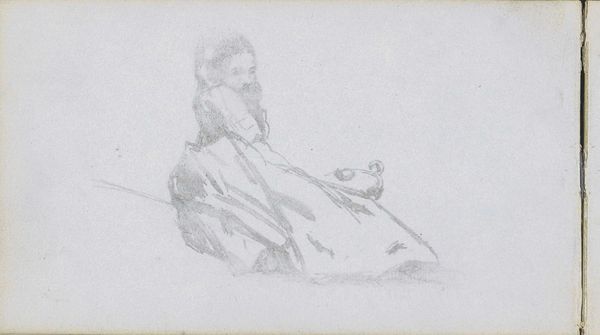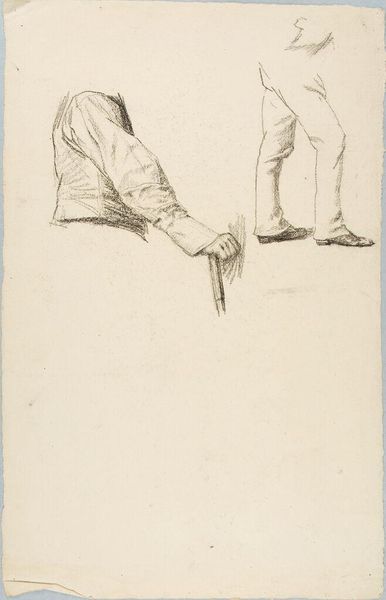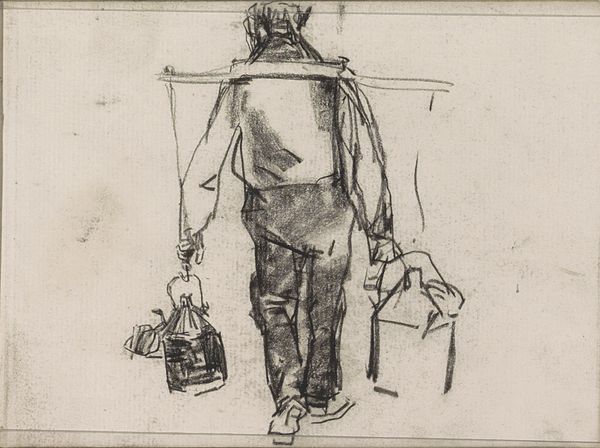
drawing, pencil, charcoal
#
portrait
#
drawing
#
pencil sketch
#
charcoal drawing
#
romanticism
#
pen-ink sketch
#
pencil
#
genre-painting
#
charcoal
#
charcoal
Dimensions: 7 9/16 x 6 7/8 in. (19.2 x 17.5 cm)
Copyright: Public Domain
Editor: This is John McLenan's "Man at Bar," a pencil and charcoal drawing, likely made sometime between 1827 and 1865. I’m struck by the man’s posture, the way he’s leaning heavily on the bar. What emotions do you think McLenan was trying to capture here? Curator: The leaning posture you noticed is indeed key. Notice how the artist rendered shadow around him too: it is not just an image of a man at a bar. Bars, historically, have often been portrayed as spaces of both camaraderie and profound solitude. What do the drooping shoulders and downcast head tell us about this man’s inner world, within that public sphere? Editor: That's interesting; it gives me a totally new understanding of the piece. Is there a specific historical context to understand why this dual portrayal was so common? Curator: Precisely! In the Romantic era, there was an obsession with exploring interiority. The bar becomes a stage where inner turmoil plays out under the guise of social interaction. McLenan captures a tension we see throughout 19th century art—a struggle to reconcile individual feelings within the rapidly changing social landscape. Does this inform how you perceive the function of this man within the space? Editor: Yes, the man’s slumped posture suggests isolation, not joviality. He appears more burdened than relaxed. I hadn't considered the Romantic influence, that helps put it in perspective. Curator: Absolutely. The artist isn't simply documenting a scene, but offering us insight into the psychological weight carried by individuals amidst societal shifts. And those kinds of stories persist today. Editor: I see what you mean, the artwork explores the intersection of personal emotion and cultural context. Thank you, that was a very insightful explanation. Curator: My pleasure. It's these layered interpretations that make art so rewarding to examine.
Comments
No comments
Be the first to comment and join the conversation on the ultimate creative platform.
